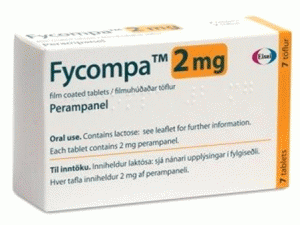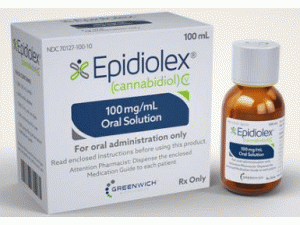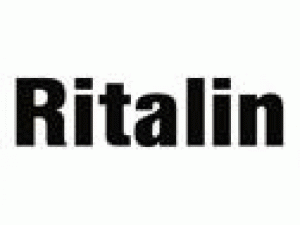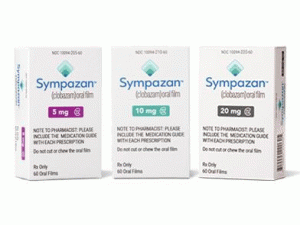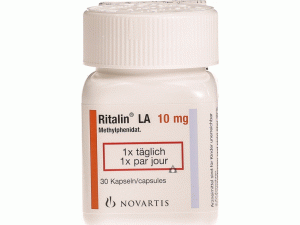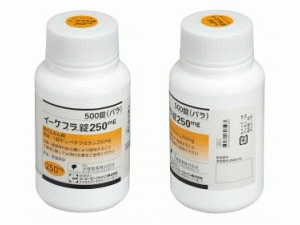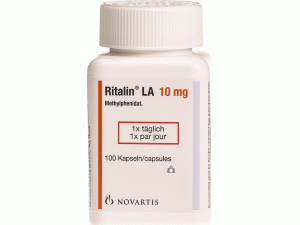咪达唑仑鼻腔喷雾剂说明书_Nayzilam_nasal_spray
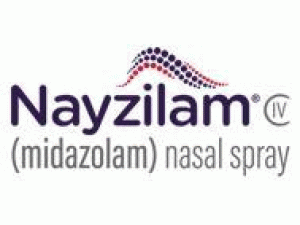
产地国家:美国
处 方 药:是
所属类别:5毫克/01毫升/喷 2个鼻腔喷雾装置
包装规格:5毫克/01毫升/喷 2个鼻腔喷雾装置
计价单位:套件
生产厂家中文参考译名:优时比
生产厂家英文名:UCB
原产地英文商品名:Nayzilam nasal spray 5mg/0.1mL/spray 2spray/kit
原产地英文药品名:midazolam
中文参考商品译名:Nayzilam鼻腔喷雾剂 5毫克/01毫升/喷 2个喷/套件
中文参考药品译名:咪达唑仑
简介:
这是一种经鼻腔给药的苯二氮卓类药物,适用于12岁及以上癫痫患者,用于频繁发作活动(如癫痫丛集发作、急性反复发作)间歇性、刻板性发作的紧急治疗。
Nayzilam是批准的首个也是唯一一个通过鼻腔给药治疗癫痫丛集发作的疗法,其鼻腔喷雾给药方式可为目前治疗选择有限的患者及其照料者提供一种新的解决方案。
警告:伴随使用的风险阿片类药物
查看完整的盒装警告的完整处方信息。
同时使用苯二氮卓类和阿片类药物可能导致前列腺癌,呼吸抑制,昏迷和死亡。
作用机制:
咪达唑仑的确切作用机制尚不完全清楚,但据认为它涉及GABA能神经传递的增强,这是由GABAA受体的苯二氮卓位点结合引起。
适应症和用法:
NAYZILAM是一种苯二氮卓类药物,用于急性治疗频繁癫痫发作(即癫痫发作)的间歇性,刻板性发作聚类,急性重复性癫痫发作)与12岁及以上癫痫患者的常见癫痫发作模式不同。
剂量和给药:
仅通过鼻途径管理NAYZILAM。
初始剂量:在一个鼻孔中施用一次喷雾(5mg剂量)。
第二剂量:如果患者对初始剂量没有反应,则在10分钟后给予相反鼻孔一次额外喷雾(5mg剂量)。
最大剂量和治疗频率:不要使用超过2剂的NAYZILAM来治疗癫痫发作。建议NAYZILAM每三天用于治疗不超过一次,每月治疗不超过五次。
剂量形式和强度:
单剂量鼻喷雾装置,每0.1mL溶液含有5mg咪达唑仑。
禁忌症:
对咪达唑仑过敏的患者
急性窄角型青光眼患者
警告和注意事项:
中枢神经系统抑制与其他中枢神经系统抑制剂或中度或强CYP3A4抑制剂同时使用:当与酒精或其他中枢神经系统抑制剂一起使用时,可能导致CNS降压效果增加。
伴随中度或强度CYP3A4抑制剂的使用可能导致长时间的镇静,因为咪达唑仑的血浆清除率降低。
自杀行为和想法:抗癫痫药物会增加自杀意念和行为的风险。
认知功能受损:咪达唑仑与接下来几个小时的召回部分或完全受损的高度相关。
不良反应:
最常见的不良反应均为嗜睡,头痛,鼻部不适,喉咙刺激和鼻漏。
药物相互作用:
CYP3A4抑制剂:避免将NAYZILAM与中度或强CYP3A4抑制剂共同给药。当与温和的CYP3A4抑制剂共同给药时,应使用NAYZILAM。
阿片类药物:呼吸抑制的风险增加。
其他中枢神经系统抑制剂:可能会增加通气不足,气道阻塞,去饱和或呼吸暂停的风险,并可能导致深远和/或延长的药物作用。
用于特定人群:
怀孕:根据动物数据,可能会造成胎儿伤害。
哺乳期:咪达唑仑在人乳中排泄。当NAYZILAM给予哺乳期妇女时,应该谨慎行事。
肾功能损害:肾功能不全患者的咪达唑仑及其代谢产物的半衰期可能会延长,这可能导致长期接触。
包装提供/存储和处理:
如何提供:
NAYZILAM作为咪达唑仑的溶液提供。 每个单剂量鼻喷雾装置在0.1mL溶液中提供5mg咪达唑仑。
NAYZILAM以2个鼻腔喷雾装置(NDC 50474-500-15)的盒子供应
包含在单个泡罩包装内。
存储和处理:
在准备使用之前,请勿打开泡罩包装。 使用前请勿测试或灌注。
如果鼻腔喷雾装置出现损坏,请勿使用。
储存在20°C至25°C(68°F至77°F)的受控室温下。 短途旅行允许在15°C至30°C(59°F至86°F)之间。
NAYZILAM(midazolam) nasal spray
REGISTER FOR NAYZILAM UPDATES
IMPORTANT SAFETY INFORMATION
NAYZILAM is indicated for the acute treatment of intermittent, stereotypic episodes of frequent seizure activity (i.e., seizure clusters, acute repetitive seizures) that are distinct from a patient's usual seizure pattern in patients with epilepsy 12 years of age and older.
CONTRAINDICATIONS
NAYZILAM is contraindicated in patients with acute narrow-angle glaucoma.
RISKS FROM CONCOMITANT USE WITH OPIOIDS
Concomitant use of benzodiazepines, including NAYZILAM, and opioids may result in profound sedation, respiratory depression, coma, and death.
Reserve concomitant prescribing of these drugs for use in patients for whom alternative treatment options are inadequate.
Limit dosages and durations to the minimum required.
Follow patients for signs and symptoms of respiratory depression and sedation.
RISKS OF CARDIORESPIRATORY ADVERSE REACTIONS
Serious cardiorespiratory adverse reactions have occurred after administration of midazolam. Warn patients and caregivers about the risks of respiratory depression, cardiac and respiratory arrest.
Respiratory depression was observed with the administration of NAYZILAM during clinical trials. Cardiac or respiratory arrest caused by NAYZILAM was not reported during clinical trials.
CENTRAL NERVOUS SYSTEM DEPRESSION FROM CONCOMITANT USE WITH OTHER CENTRAL NERVOUS SYSTEM DEPRESSANTS, OR MODERATE OR STRONG CYP3A4 INHIBITORS
Drug products containing midazolam, including NAYZILAM, have a central nervous system (CNS) depressant effect.
Risks from Concomitant Use with Other CNS Depressants
NAYZILAM may cause an increased CNS-depressant effect when used with alcohol or other CNS depressants (e.g., opioids). Warn patients and caregivers that the use of NAYZILAM in combination with alcohol or other CNS depressant drugs may increase the risk of hypoventilation, airway obstruction, desaturation, or apnea and may contribute to profound and/or prolonged drug effect.
Risks from Concomitant Use with Moderate or Strong CYP3A4 Inhibitors
Concomitant use of NAYZILAM with moderate or strong CYP3A4 enzyme inhibitors may result in prolonged sedation because of a decrease in plasma clearance of midazolam. Caution patients against engaging in hazardous occupations requiring mental alertness, such as operating machinery, driving a motor vehicle or riding a bicycle until they have completely returned to their level of baseline functioning.
SUICIDAL BEHAVIOR AND IDEATION
Antiepileptic drugs (AEDs), including NAYZILAM, increase the risk of suicidal thoughts or behavior in patients taking these drugs for any indication. Monitor patients treated with NAYZILAM for the emergence or worsening of depression, suicidal thoughts or behavior, and/or any unusual changes in mood or behavior. Advise patients and caregivers to be alert for these behavioral changes and to immediately report them to the healthcare provider.
IMPAIRED COGNITIVE FUNCTION
Midazolam, including NAYZILAM, is associated with a high incidence of partial or complete impairment of recall for several hours following an administered dose. Counsel patients on when they can engage in activities requiring complete mental alertness, operate hazardous machinery, or drive a motor vehicle after taking NAYZILAM.
GLAUCOMA
Benzodiazepines, including NAYZILAM, can increase intraocular pressure in patients with glaucoma. NAYZILAM may be used in patients with open-angle glaucoma only if they are receiving appropriate therapy NAYZILAM is contraindicated in patients with narrow-angle glaucoma.
ADVERSE REACTIONS
In the randomized, double-blind, placebo-controlled trial, the most common adverse reactions (>5% in any NAYZILAM treatment group) were somnolence, headache, nasal discomfort, throat irritation, and rhinorrhea.
药品价格查询,专业药品查询网站,药品说明书查询,药品比价 » 咪达唑仑鼻腔喷雾剂说明书_Nayzilam_nasal_spray

